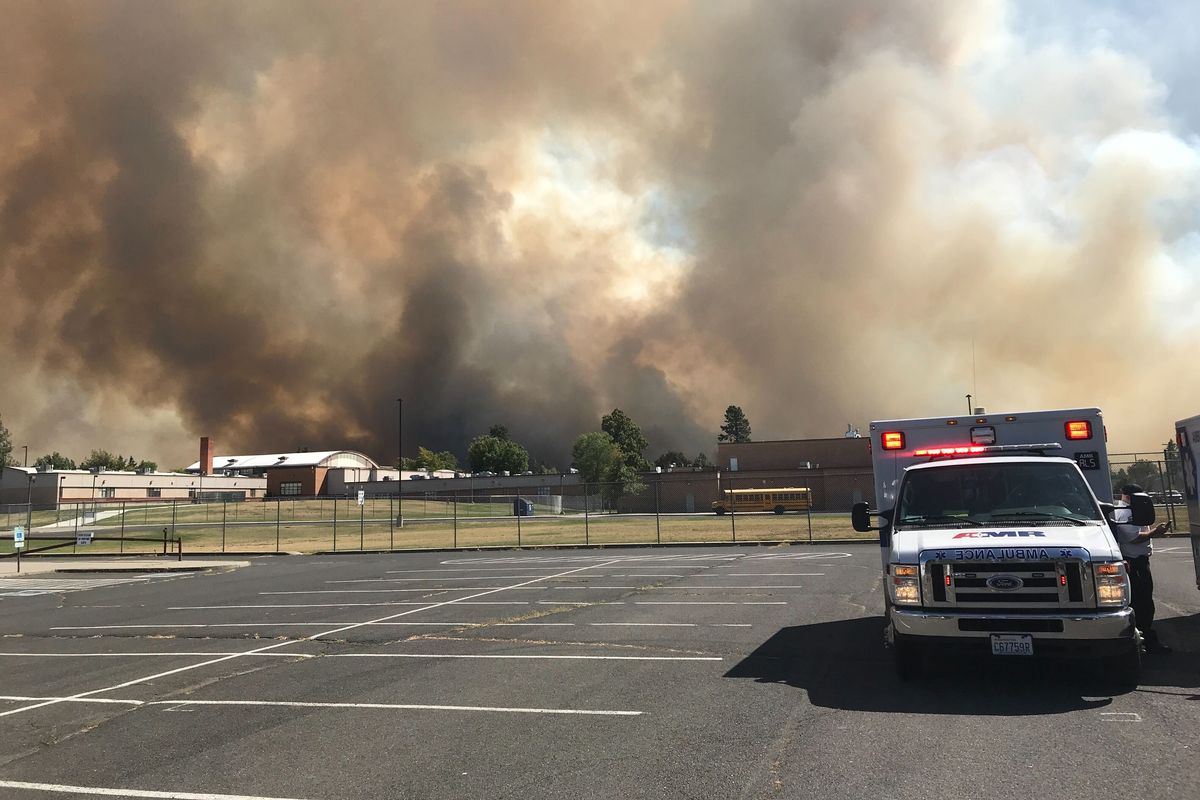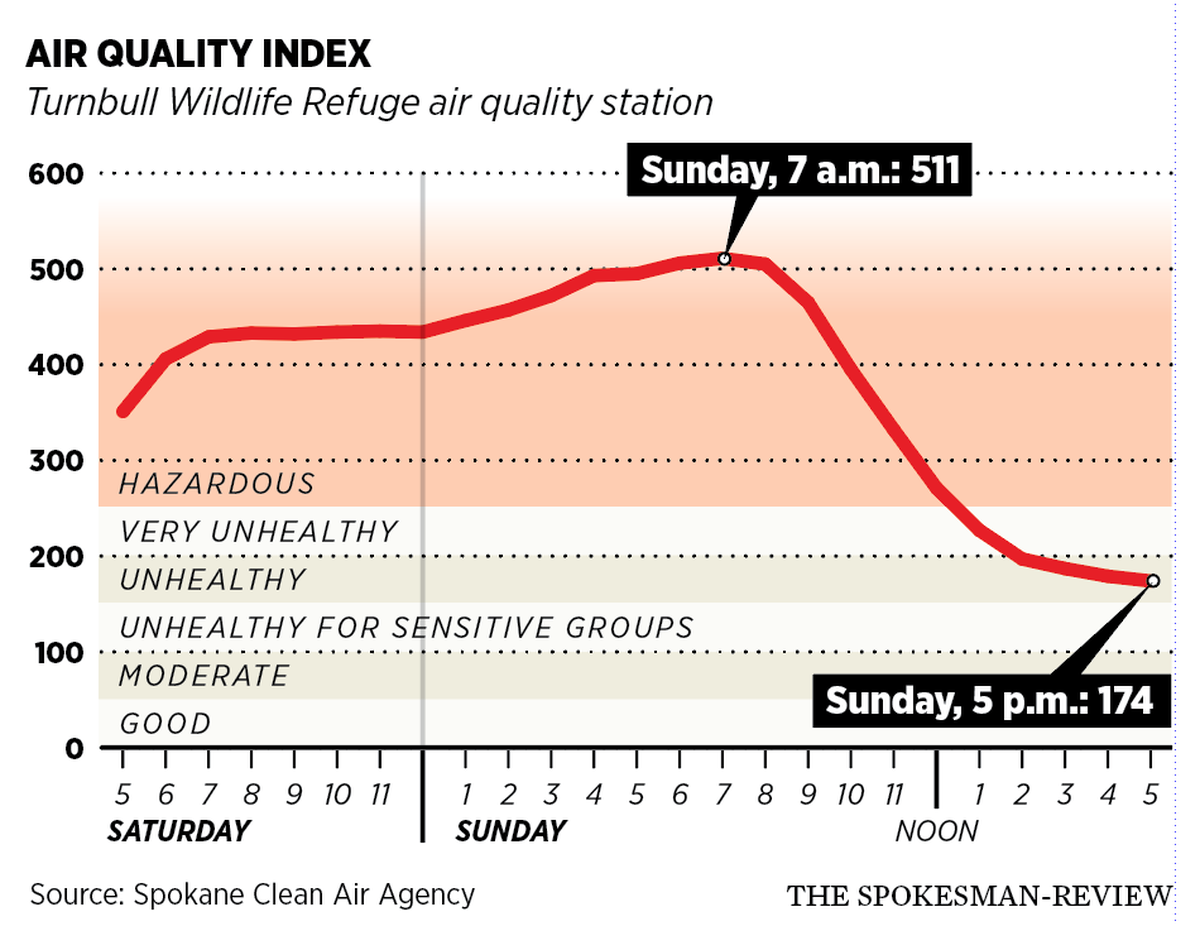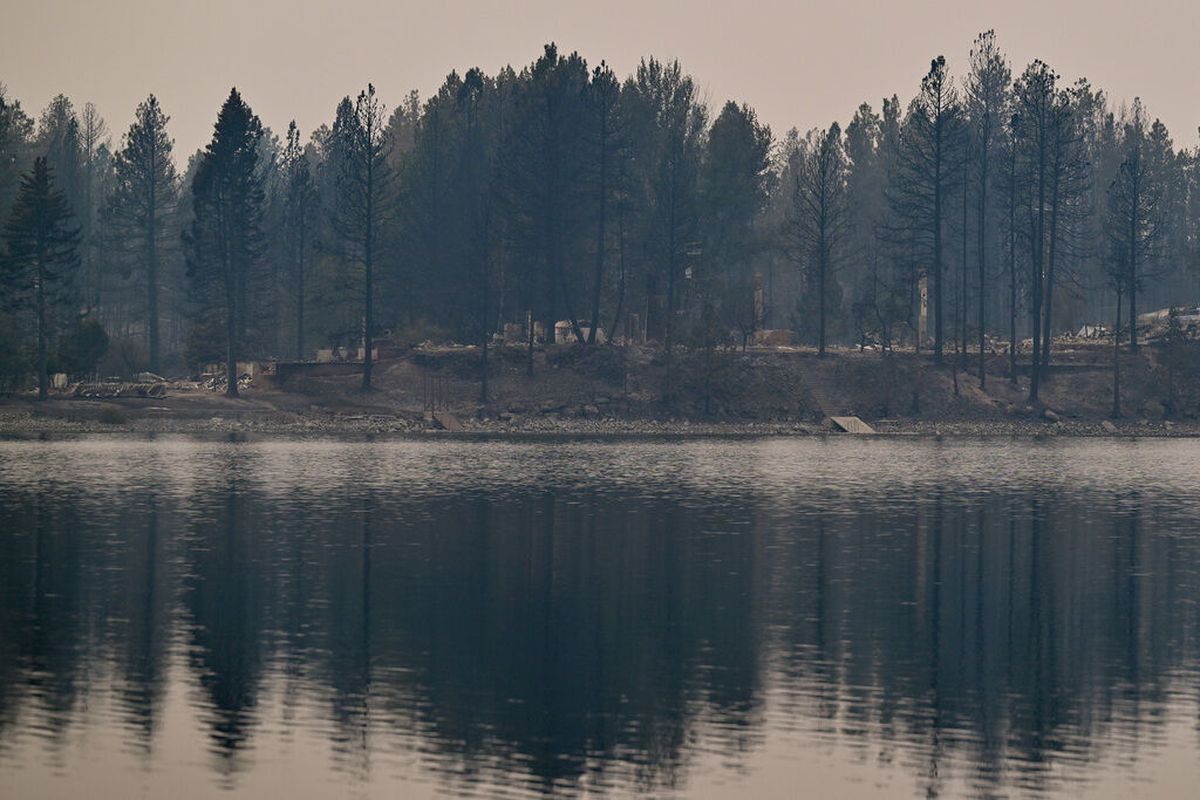How to stay safe while ‘hazardous’ levels of smoke and dust blanket Spokane from weekend fires
Smoke clings to Silver Lake on Sunday, Aug. 20, 2023, after the Gray fire destroyed the structures on Friday on near Medical Lake. (Tyler Tjomsland/The Spokesman-Review)Buy a print of this photo
Dr. Ben Arthurs knew his work was going to “hit much closer to home” than it ever had before as he saw a plume of smoke from his office at MultiCare Deaconess Hospital.
“I can’t say I’ve personally been as close to anything like what we’ve seen in Medical Lake this week,” Arthurs, an intensive care unit doctor and lung disease expert, said Sunday.
“Both from a professional standpoint in terms of how it affects me as a pulmonary critical care doctor as well as just from a personal standpoint of thinking about my family, my kids and how prepared we are for something like this to happen in our neighborhood. It hits close to home and it’s different and shocking and pretty emotional.”
Deaconess has seen an influx of patients dealing with the aftereffects of the hazardous smoke that has settled over Spokane, but not any burn victims.
Arthurs said he had treated patients in the ICU this weekend because of the wildfire smoke – mostly those with pre-existing conditions.
“A lot more of our patients are calling in with worsening symptoms. Most of the patients we serve have asthma, or COPD, or emphysema. They’re going to call in complaining of increased cough, trouble breathing, chest tightness and wheezing,” he said.
For many of these patients, an emergency inhaler has not been enough. Arthurs has been prescribing steroids like prednisone.
Those most at-risk from smoke inhalation include the elderly, the very young or pregnant, and those who have chronic heart or lung conditions.
Neither Deaconess nor Providence Health Care have treated those who were injured directly in the fire. But danger remains for anyone breathing the air in and around the Inland Northwest.
How bad is the air?
As the fires burned on Sunday and smoke from the massive fires in Canada drifted into Eastern Washington, air quality deteriorated to levels off the 500-point scale used by government agencies – making any outside exposure to the air “hazardous” to the average person’s health.
The smoke and dust hanging over Spokane can get into the lungs and bloodstream. The more microscopic “particulate matter” in the air, the less time someone can spend outside safely. Levels tracked by the Spokane Regional Clean Air Agency showed the region far above the most hazardous levels for most of Saturday and Sunday.
On the 500-point air quality index, a reading above 300 indicates “emergency conditions” that will effect everyone. Air at the Turnbull National Wildlife Refuge peaked at 511 at 7 a.m. Sunday – the highest recorded in the region and above what the scale generally measures. At one point, Spokane had the worst air quality in the country.
A collection site in Spokane located at Monroe Street and Wellesley Avenue peaked at midnight Saturday with a level of 480, while another at Augusta Avenue and Fiske Street peaked at 429 around the same time.
Levels of air pollution fell steadily Sunday, though they remained either in the hazardous or very dangerous levels. As of 4:35 p.m. the highest level in the region was at 189, in the “unhealthy” range, according to Spokane Clean Air.
But according to the National Weather Service, air quality will not stay that way. Air pollutants were expected to return to hazardous levels by Sunday evening and continue through the next few days. Levels are set to improve again Monday afternoon before smoke returns to the area from other fires .
“Monday there is a chance we might see a little bit of relief for the afternoon. We’re getting all that smoke from the Oregon (Elk) fire being pushed directly into town,” said Krista Carrothers, a meteorologist with the National Weather Service in Spokane. Those winds will shift to the southeast tonight, so most of that smoke from both the Gray and the Oregon will be pushed to the northwest.”
Smoke from Montana fires should push into the region Monday, Carrothers said.
Spokane is also getting smoke from fires north of Spokane in Canada and the Cascades, she added. All the smoke is unlikely to dissipate until a new weather system comes to the area.
“We need a cold front to come through. That’s going to push a lot of it north for us, but we’ll still have some decreased air quality,” Carrothers said.
How do I stay safe?
Given the high levels of dust and smoke in the air, spending any time outside Monday, and likely for the next few days, could present a serious risk to the average person’s health.
Arthurs said it is unclear what exactly long-term consequences might be based on current research.
“There’s certainly a lot of red flags and signals for the short-term effects, and we suspect that there are also long-term effects … but we definitely know that high intensity, prolonged exposure to woodsmoke will have the same kind of deleterious effects as we see for folks who smoke tobacco for years and years,” he said.
Short-term symptoms of breathing air at its current quality include throat inflammation and swelling sinuses.
“The trouble is that at the really high particulate levels like we’re seeing today, which are off the charts, are not going to take a lot of breathing in that environment to get a substantial exposure to your respiratory tract and your circulatory system,” Arthurs said.
He also noted increased risk to the cardiovascular system.
“It’s really important that people take seriously chest pain symptoms. It’s common to get a little bit of irritation, just a tightness. But if there’s new onset, sudden chest pain, it demands an evaluation,” he said.
The best advice to staying safe is to stay indoors.
Turning on air conditioning will filter air. If a home does not have a filter, the Environmental Protection Agency recommends creating air cleaners by attaching an air filter to a box fan with tape, brackets/clamps or a bungee cord.
If you go outside, Arthurs recommended the use of N-95 respirator masks. The cloth or surgical masks popularized in the COVID-19 pandemic will not provide adequate protection, he said.


